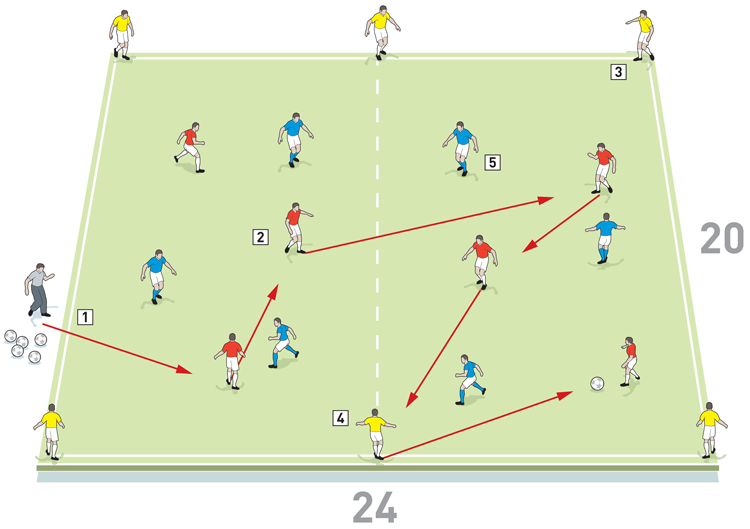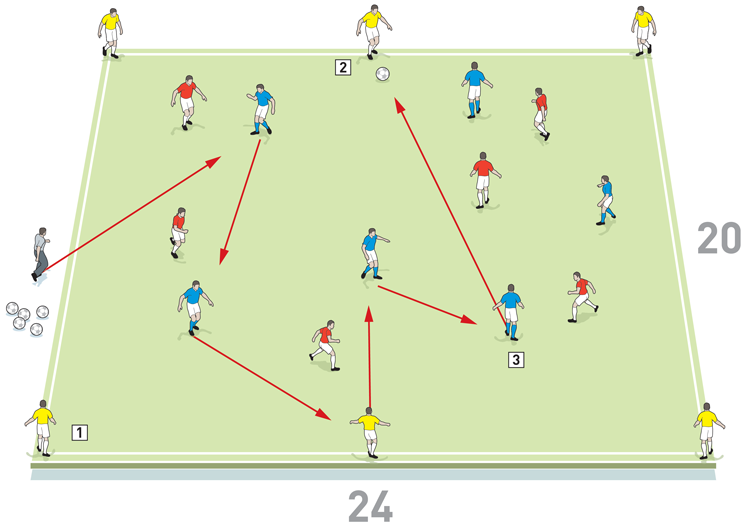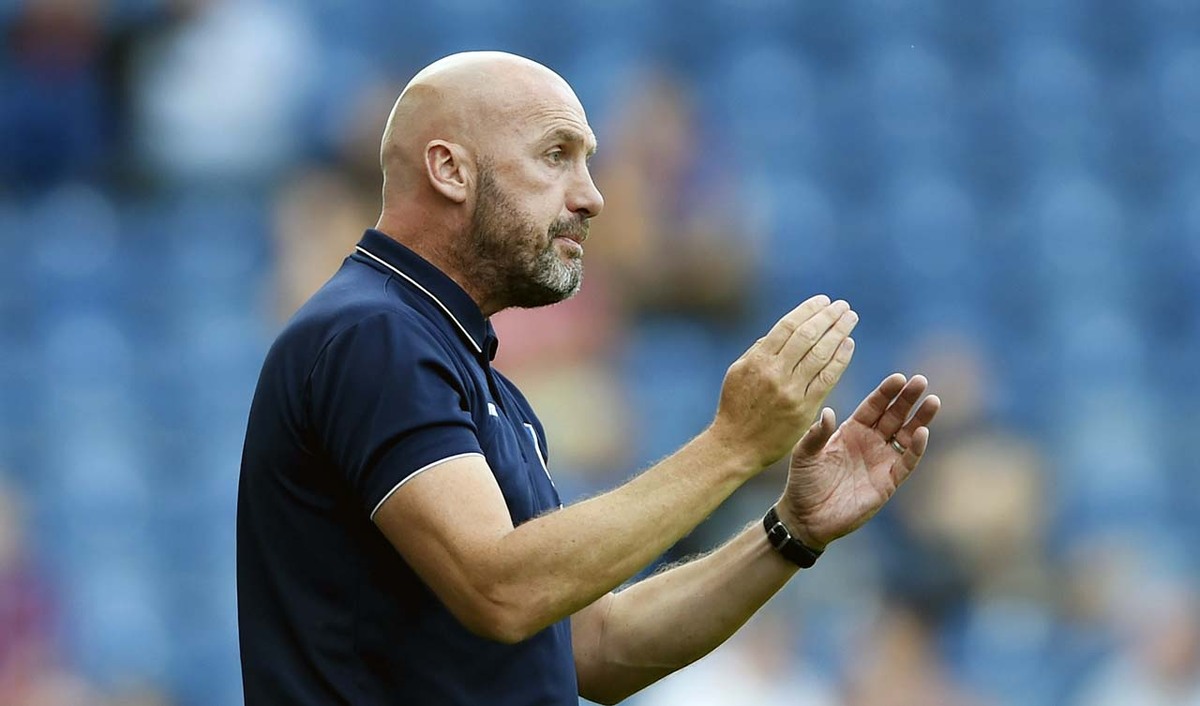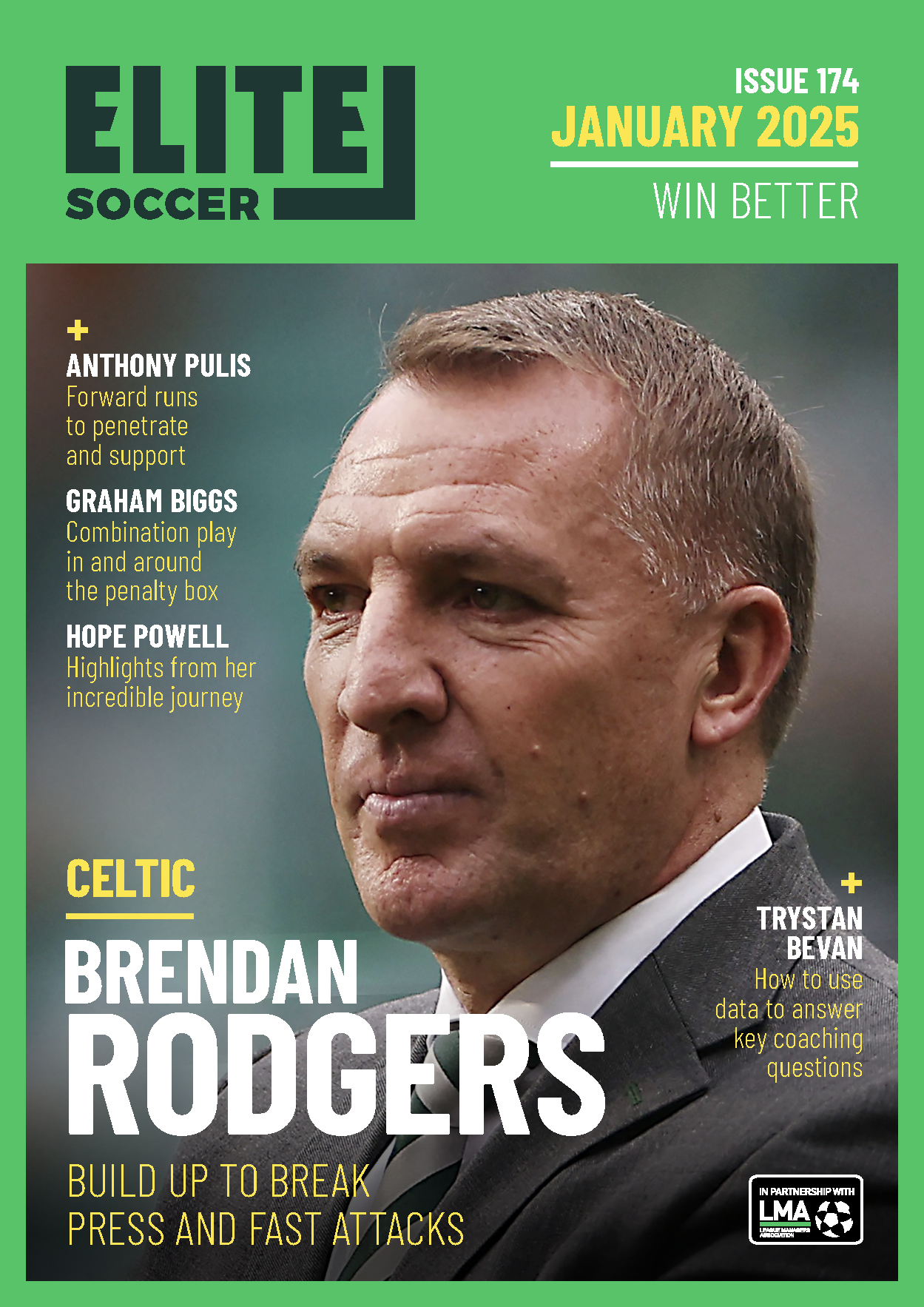You are viewing 1 of your 1 free articles
Attacking the final third
Use this possession-based session to encourage players to use combination play and intelligent movement to keep hold of the ball and work it into the final third.
| Area | Up to 44x36 yards |
| Equipment | Balls, bibs, cones, 2 full size goals |
| No. of Players | 18 players + 2 goalkeepers |
| Session Time | Tight possession: 15mins, Big possession: 20mins, Small-sided game: 30mins |
This is a possession-based session aimed at encouraging players to use high quality combination play and intelligent movement to keep hold of the ball and work it into the final third. It focuses on teaching players when to pass forward and when to switch play.
The session works on both tight area play and more expansive play to make it as match relevant as possible. In the tight areas, fast passing means that a good first touch and accurate passing is vital to success, just as it is in areas like the penalty area. In the more expansive game, switching play with movement and support from all players becomes key to keeping possession.
To add a competitive element to the session, it culminates in a small-sided game that uses supporting wide players to help create goal-scoring opportunities from crosses.
We would normally run this session every two weeks.
What do I get the players to do?
Tight possession
We set up an area of 24x20 yards, divided into two halves. We’re using 18 players, split into three teams of six. Two of the teams start with three of their players in each half, making it a 3v3 in each half.
The other team plays on the outside, as shown [1]. They play for the team in possession and the two outside players on the halfway line can pass into either half, while the other four can only play into their own half.
The coach starts play with a pass into one of the teams in the centre. They must pass to keep possession of the ball, using the support of the outside players if necessary, but the outside players have to play the ball back into the area as soon as they receive it.
1

2. The team in possession use good movement and combination play to keep hold of the ball
3. The yellow team on the outside helps the team in possession
4. The two yellows on the halfway line can pass into either half, but the other four can only pass into their own half
5. The pressing team try to win the ball and then pass to keep possession
Play for 15 minutes, rotating teams so everyone has a go on the outside.
How do I progress the session?
Big possession
We use the same set-up as before but we remove the halfway line. Teams now play 6v6 with free movement across the whole area, as shown [2]. The team in possession can still use the outside players to help them keep hold of the ball, but the outside players must always pass back into the area rather than pass between themselves. Look for players to switch the play by moving the ball across the pitch and linking the outside players from one side to the other.
2

2. The team in possession can use the yellow outside players to keep the ball
3. Players should look to switch the play from one side of the area to the other
Play for 20 minutes rotating teams regularly.
How would you put this into a game situation?
Small-sided game
We now set up an area of 44x36 yards with a goal and goalkeeper at each end. We’re using the same basic principles, with two teams of six outfield players in the central area and a third team of six supporting play from outside the area.
The two central teams have three players in each half. We use two-touch wide players on the outside and we encourage them to support the team in possession by playing crosses into the strikers, as shown [3].
3

2. One attacker can cross the halfway line to give his team a 4v3 overload
3. Here the reds press and try to win possession
4. Use two-touch wide players on the outside to cross into the strikers
We can progress this game by allowing one player from the defensive half of the pitch to cross the halfway line and join in attacks when his team are in possession, giving the attackers a 4v3 overload in that half.
What are the key things to look out for?
To keep possession we want to see good use of combination play and intelligent movement from the central players. We also want to see that players are picturing where their next pass is to be made before receiving the ball.
What are the typical mistakes players might make and how do I avoid them?
Typical mistakes include players making wrong choices of when to play forwards or switch play. Also, players can tend to force play when trying to keep possession in tight areas.
Related Files
Editor's Picks
Using the goalkeeper in build-up play
Pressing principles
Intensive boxes drill with goals
Penetrating the final third
Creating and finishing
My philosophy
Pressing initiation
Compact team movement
Defensive organisation
Coaches' Testimonials

Alan Pardew

Arsène Wenger

Brendan Rodgers

Carlos Carvalhal

José Mourinho

Jürgen Klopp

Pep Guardiola

Roy Hodgson

Sir Alex Ferguson

Steven Gerrard
Coaches' Testimonials

Gerald Kearney, Downtown Las Vegas Soccer Club

Paul Butler, Florida, USA

Rick Shields, Springboro, USA

Tony Green, Pierrefonds Titans, Quebec, Canada
Join the world's leading coaches and managers and discover for yourself one of the best kept secrets in coaching. No other training tool on the planet is written or read by the calibre of names you’ll find in Elite Soccer.
In a recent survey 92% of subscribers said Elite Soccer makes them more confident, 89% said it makes them a more effective coach and 91% said it makes them more inspired.
Get Monthly Inspiration
All the latest techniques and approaches
Since 2010 Elite Soccer has given subscribers exclusive insight into the training ground practices of the world’s best coaches. Published in partnership with the League Managers Association we have unparalleled access to the leading lights in the English leagues, as well as a host of international managers.
Elite Soccer exclusively features sessions written by the coaches themselves. There are no observed sessions and no sessions “in the style of”, just first-hand advice delivered direct to you from the coach.









